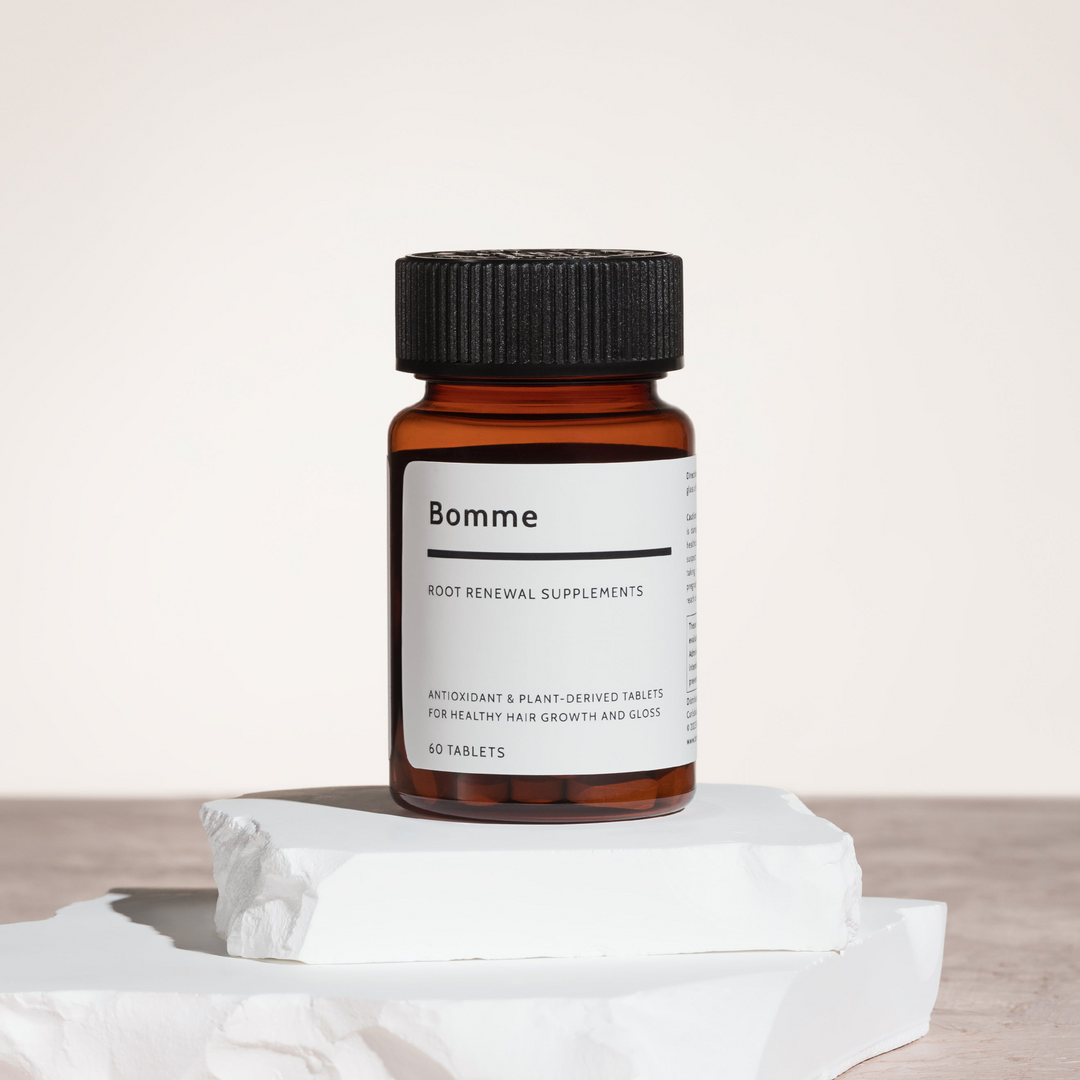🧲 Iron, Ferritin, and Hair Loss: What You Need to Know
When it comes to hair health, we often think of shampoos, genetics, or styling. But iron levels — and specifically ferritin — are crucial for hair growth and shedding patterns. Low ferritin is a frequently overlooked factor in diffuse hair thinning, especially in women (Clinikally).
🔬 What Is Ferritin and Why Is It Important for Hair Growth?
Ferritin is a protein that stores iron in your body. Unlike hemoglobin, which reflects your current iron status, ferritin indicates long‑term iron reserves. Because hair follicles are highly metabolically active, they need steady oxygen and nutrient delivery. If ferritin drops too low, follicles may prematurely enter the shedding phase (telogen effluvium) — even when hemoglobin levels look normal. Experts often consider 50–70 ng/mL as the optimal ferritin range for hair growth (EurekaHealth).
⏳ How Long Does It Take for Hair to Regrow After Fixing Low Ferritin?
- Shedding may begin to slow in 6–8 weeks
- New growth is often visible in 3–6 months
- Full density can take 9–12 months or more
👩🦰 Who Is Most at Risk for Low Ferritin?
- Women of reproductive age, due to monthly blood loss
- Vegetarians or vegans (plant‑based iron is less bioavailable)
- People with GI absorption issues (IBS, celiac disease, low stomach acid)
- Those with low dietary iron intake (red meat, beans, lentils, spinach)
📚 What Do Studies Say About Ferritin and Hair Loss?
- A study of 200 women with chronic telogen effluvium found that 65% had ferritin below 40 µg/L and 95% had levels under 70 µg/L, showing a strong link between low ferritin and hair thinning (Springer Study).
- Other studies confirm significantly lower ferritin in women with alopecia versus healthy controls (Clinical Guide).
🌿 How Bomme Supports Holistic Hair Health
At Bomme, we believe real hair transformation takes time and consistency. While Bomme’s supplements don’t replace iron therapy for deficiency, they provide zinc, niacin, and plant‑based antioxidants to support scalp health and reduce inflammatory stress on follicles. When paired with our Revitalizing Scalp Toner and Root Renewal Supplements, Bomme’s system helps create an optimal environment for growth wh...
📊 Ferritin Levels & Hair Impact at a Glance
| Ferritin Level (ng/mL) | Impact on Hair |
|---|---|
| < 30 | May be associated with increased shedding & thinning |
| 30–40 | Borderline, shedding possible |
| 40–70 | Better support for regrowth |
| 70–100+ | Often considered optimal for follicle function |
✅ Key Takeaways
- Low ferritin is a common but underdiagnosed cause of hair loss (Clinikally).
- Optimal ferritin for hair growth is often 50–70 ng/mL, and sometimes up to 100 ng/mL (Clinical Guide).
- Regrowth is gradual — expect 3–6 months or more for visible improvement. Individual results vary.
- Always ask your doctor for a ferritin blood test if you have unexplained shedding.
📌 Frequently Asked Questions
Q: Can low ferritin cause hair loss even if hemoglobin is normal?
Yes. Ferritin reflects stored iron, while hemoglobin reflects circulating levels. You can have normal hemoglobin but low ferritin that impacts hair growth.
Q: How long does it take for hair to grow back after fixing ferritin?
Shedding may slow within 6–8 weeks, but visible regrowth typically takes 3–6 months.
Q: What is the ideal ferritin level for hair growth?
Many experts recommend 50–70 ng/mL, and sometimes up to 100 ng/mL for optimal results.
💛 Ready to support your hair from the inside out?
👉 Discover Bomme Root Renewal Supplements and Revitalizing Scalp Toner — a clean, science‑backed system for long‑term scalp and hair wellness.
⚠ Disclaimer: This content is for informational purposes only and does not replace medical advice. Please consult your healthcare provider for diagnosis and treatment of hair loss.













